Egg Styles and How To Cook Them Perfectly
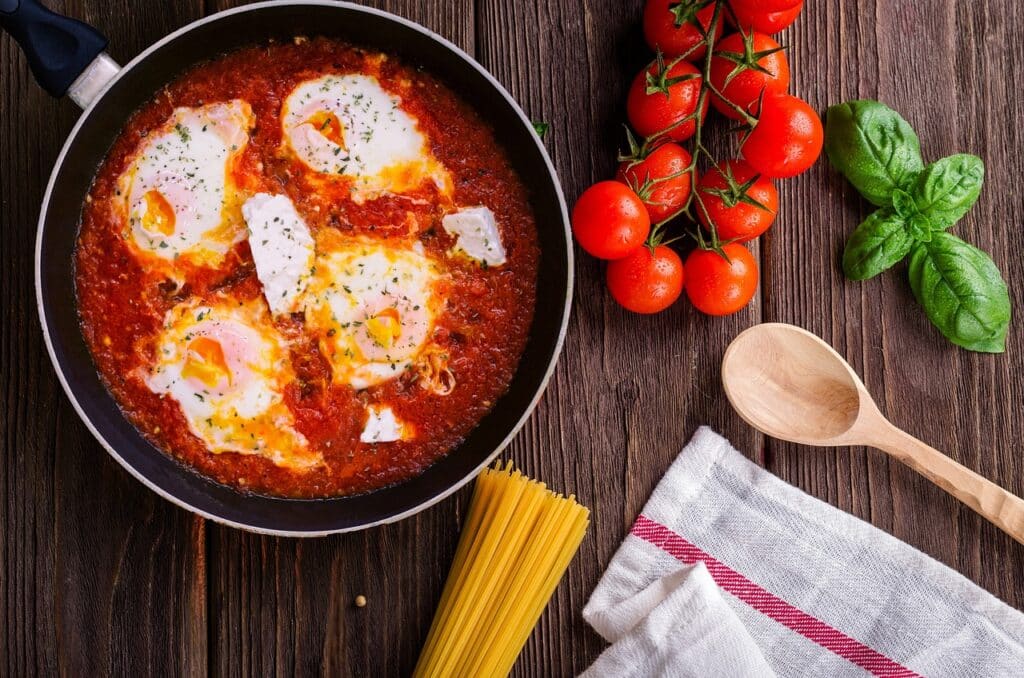
How Many Styles Of Eggs Are There?
There are roughly 10 different styles of eggs, and a few of them can be cooked in numerous ways. A great example of this is how you can cook a sunny side up egg: over easy, over medium, and over well done.
What Are The 10 Different Styles Of Eggs?
- Over easy eggs
- Over medium eggs
- Basted eggs
- Sunny side up eggs
- Hard fried eggs
- Poached eggs
- Hard boiled eggs
- Baked eggs
- Omelette
- Cloud eggs
How To Make Eggs?
There are many ways to make eggs, but here is a basic recipe for cooking scrambled eggs on a stovetop:
Ingredients:
- 2-3 large eggs
- 1 tablespoon butter or oil
- Salt and pepper to taste
Instructions:
SIGN UP FOR OUR MONTHLY NEWSLETTER
- Crack the eggs into a bowl and whisk them together with a fork or whisk.
- Heat a nonstick skillet over medium heat and add the butter or oil.
- Once the butter has melted or the oil is hot, pour in the whisked eggs.
- Use a spatula to gently stir the eggs as they cook, scraping the bottom of the pan to prevent sticking and folding the cooked egg in on itself.
- Cook the eggs until they are just set and still slightly runny.
- Remove the skillet from the heat and season the eggs with salt and pepper to taste.
- Serve immediately and enjoy!
- Note: You can add other ingredients such as cheese, herbs, or vegetables to the eggs while they cook for added flavor and nutrition.
Type Of Fried Eggs?
Here are a few different types of fried eggs you can make:
- Sunny-side up: This is a classic fried egg where the egg is fried on one side only, leaving the yolk runny and the white set.
- Over-easy: This is a fried egg that is flipped over and cooked on both sides, but the yolk is still runny.
- Over-medium: This is a fried egg that is flipped over and cooked on both sides until the white is set, but the yolk is still slightly runny.
- Over-hard: This is a fried egg that is flipped over and cooked on both sides until both the white and the yolk are set and fully cooked.
- Basted: This is a fried egg that is cooked in a covered skillet with a small amount of water or broth added to create steam, resulting in a white that is set and a yolk that is runny.
- Poached: This is a type of fried egg that is cooked in simmering water until the white is set and the yolk is runny.
Note: When cooking fried eggs, it’s important to use a nonstick skillet or a well-seasoned cast-iron skillet to prevent the eggs from sticking. You can also use butter or oil to help prevent sticking and add flavor to the eggs.
What To Make With Eggs?
Eggs are a versatile ingredient that can be used in many different ways, including breakfast dishes, snacks, main courses, and desserts. Here are a few ideas for what to make with eggs:
- Scrambled eggs: A classic breakfast dish that is quick and easy to make. Simply whisk eggs together with a little milk or cream, then cook in a skillet over medium heat until scrambled.
- Omelet: Another classic breakfast dish, an omelet is made by whisking eggs together with fillings such as cheese, vegetables, or meats, then cooking in a skillet until set.
- Frittata: Similar to an omelet, a frittata is an Italian-style egg dish that is baked in the oven. It typically contains eggs, cheese, vegetables, and/or meats.
- Quiche: A savory tart made with a pastry crust, eggs, cream, cheese, and various other ingredients such as vegetables, meats, or seafood.
- Eggs Benedict: A popular brunch dish consisting of a poached egg served on top of an English muffin with Canadian bacon or ham and hollandaise sauce.
- Huevos rancheros: A Mexican-style breakfast dish that typically includes fried eggs, tortillas, beans, and salsa.
- Deviled eggs: A popular appetizer made by halving hard-boiled eggs, removing the yolks, mixing them with mayonnaise and other flavorings, and then filling the egg whites with the mixture.
- Egg salad: A sandwich filling made by chopping hard-boiled eggs and mixing them with mayonnaise, mustard, and other ingredients such as celery, onions, or pickles.
- Shakshuka: A Middle Eastern dish consisting of eggs cooked in a spicy tomato sauce.
- Pavlova: A dessert made by whipping egg whites with sugar, then baking until crisp on the outside and soft on the inside. It is typically served with whipped cream and fruit.
What Can I Do With Lots of Eggs?
If you have lots of eggs on hand, there are plenty of ways to use them up. Here are some ideas:
- Freeze them: If you can’t use up all your eggs before they go bad, you can freeze them for later use. Simply crack the eggs into a container, whisk them together, and freeze in portions that you’ll use later.
- Bake a cake: Many cake recipes call for eggs, and you can make a variety of cakes from simple pound cake to more elaborate layered cakes.
- Make a quiche or frittata: These savory egg dishes are great for breakfast, lunch, or dinner, and can be made with a variety of ingredients like vegetables, meats, and cheeses.
- Make breakfast burritos: Scramble some eggs with your favorite ingredients like cheese, sausage, peppers, and onions, and wrap them up in a tortilla for an easy breakfast on the go. Add this McDonalds Breakfast Sauce to it for an extra kick of flavor!
- Make egg salad: Boil and chop up your eggs, then mix them with mayonnaise, mustard, and any other ingredients you like for a tasty egg salad.
- Make pickled eggs: Hard-boiled eggs can be pickled in a mixture of vinegar, water, sugar, and spices for a tangy snack.
- Make custard: This creamy dessert is made with eggs, milk, sugar, and vanilla and can be served warm or chilled.
- Make meringue: Egg whites can be whipped with sugar to make meringue, which can be used to top pies, cakes, and other desserts.
- Make a breakfast casserole: Combine eggs with bread, cheese, and other ingredients for a hearty breakfast casserole that can be made ahead of time.
- Make homemade pasta: Eggs are a key ingredient in many pasta recipes, so if you have a pasta maker or want to try making your own pasta by hand, this is a great way to use up lots of eggs.
Can I Freeze Eggs For Later Use?
Yes, you can freeze eggs for later use. Here are some guidelines for freezing eggs:
- Whole eggs: Crack the eggs into a container or freezer bag and whisk them together until well combined. You can add a pinch of salt or sugar to help prevent the eggs from becoming too watery when thawed. Label the container with the number of eggs and the date, and freeze for up to 6 months.
- Egg yolks: Separate the yolks from the whites and whisk the yolks together. You can add a pinch of salt or sugar to help stabilize the yolks. Label the container with the number of yolks and the date, and freeze for up to 6 months.
- Egg whites: Separate the whites from the yolks and whisk them together until frothy. Label the container with the number of whites and the date, and freeze for up to 6 months.
When you’re ready to use the frozen eggs, thaw them in the refrigerator overnight or under cold running water. Use them in recipes as you would fresh eggs, but keep in mind that frozen eggs may be slightly more watery than fresh eggs. Therefore, they may not work well for recipes that require a stiff peak, such as meringues. Frozen eggs are best used in recipes that require eggs to be mixed together, such as scrambled eggs, omelets, quiches, or baked goods.
How Much Protein In An Egg?
Eggs are a great source of protein, as well as other essential nutrients like vitamins and minerals. The amount of protein in an egg depends on the size of the egg. Here are the approximate amounts of protein in different sizes of eggs:
- Small egg (38 grams): 4.9 grams of protein
- Medium egg (44 grams): 5.5 grams of protein
- Large egg (50 grams): 6.7 grams of protein
- Extra-large egg (56 grams): 7.7 grams of protein
- Jumbo egg (63 grams): 8.9 grams of protein
Eggs are considered a complete protein, which means they contain all of the essential amino acids that your body needs to build and repair tissues. The protein in eggs is also highly bioavailable, which means it is easily absorbed and used by your body. Therefore, eggs are a great food to include in a balanced diet, especially for those who are physically active or looking to build muscle.
Are Eggs Dairy?
No, eggs are not considered dairy. Dairy refers to products that are made from the milk of mammals, such as cows, goats, and sheep. Examples of dairy products include milk, cheese, yogurt, and butter.
Eggs, on the other hand, come from chickens and are considered a type of poultry. They are an animal product, but they do not come from a mammal and are not a dairy product.
It’s worth noting, however, that some people may have allergies or intolerances to both dairy and eggs. In these cases, it’s important to avoid both types of food and to seek guidance from a healthcare professional to ensure that all nutritional needs are being met.
How Many Carbs In Eggs?
Eggs are a low-carbohydrate food, which makes them a good choice for those following a low-carb or ketogenic diet. The amount of carbohydrates in eggs is very small, as most of the calories in eggs come from protein and fat. Here are the approximate amounts of carbohydrates in different sizes of eggs:
- Small egg (38 grams): 0.4 grams of carbohydrates
- Medium egg (44 grams): 0.5 grams of carbohydrates
- Large egg (50 grams): 0.6 grams of carbohydrates
- Extra-large egg (56 grams): 0.7 grams of carbohydrates
- Jumbo egg (63 grams): 0.8 grams of carbohydrates
As you can see, eggs are a very low-carbohydrate food, and the amount of carbohydrates in an egg is not significant. This makes them a good choice for those who are watching their carbohydrate intake or following a low-carb or ketogenic diet.
How Many Calories In An Egg?
The number of calories in an egg depends on the size of the egg. Here are the approximate calorie counts for different sizes of eggs:
- Small egg (38 grams): 54 calories
- Medium egg (44 grams): 63 calories
- Large egg (50 grams): 72 calories
- Extra-large egg (56 grams): 80 calories
- Jumbo egg (63 grams): 90 calories
The majority of the calories in an egg come from protein and fat, with only a small amount of calories coming from carbohydrates. Eggs are a nutrient-dense food, meaning they are a good source of many essential nutrients, such as vitamins, minerals, and antioxidants. They are also a good source of protein, which is important for building and repairing tissues in the body. Eggs are a healthy addition to a balanced diet and can be enjoyed in a variety of ways, such as scrambled, boiled, or baked.
Does The Amount Of Calories Change In A Hard Boiled Egg?
No, the amount of calories in an egg does not change when it is boiled, whether it’s hard-boiled or soft-boiled. The calorie count of an egg is based on its size, and that does not change during the cooking process.
However, it’s important to note that if you add any ingredients or toppings to the boiled egg, such as butter or mayonnaise, this can increase the calorie count. The cooking method can also affect the overall nutritional value of the egg. For example, boiling eggs can preserve more of their nutrients than frying or scrambling, which can destroy some of the heat-sensitive vitamins and antioxidants.
Overall, boiled eggs are a healthy and nutritious food, and can be enjoyed as a snack or added to a variety of meals for a boost of protein and other important nutrients.
How Long Do Eggs Last In The Fridge?
The length of time that eggs last in the fridge can vary depending on a few factors, such as the freshness of the eggs when they were purchased and how they are stored. In general, though, here are some guidelines for how long eggs can last in the fridge:
- Raw eggs in the shell: Raw eggs can last in the refrigerator for 4-5 weeks beyond the pack date or about 3 weeks after purchase. The key is to keep them in their original carton and store them in the coldest part of the fridge, not in the door, where the temperature fluctuates more.
- Hard-boiled eggs: Hard-boiled eggs can last for up to 1 week in the fridge, provided they are stored in an airtight container to prevent odors from other foods in the fridge from being absorbed into the egg. You can leave the shell on until you’re ready to eat them.
- Egg whites and egg yolks: If you have separated the egg whites and yolks, they can be stored in the fridge in an airtight container for up to 4 days.
It’s important to note that once an egg has been cracked open, it should be used or cooked within 2 days to ensure freshness and safety. Additionally, it’s always a good idea to check the expiration date on the carton of eggs and follow any storage instructions provided by the producer.
What Is The Most Popular Egg Dish In The World?
Eggs are a popular food all around the world, and there are many different ways to prepare them. The most popular egg dish in the world may vary depending on where you are, but here are a few egg dishes that are enjoyed in different parts of the world:
- Omelette: This is a dish made from beaten eggs that are cooked in a frying pan with various fillings, such as cheese, vegetables, or meats. Omelettes are popular in many countries, including France, the United States, and India.
- Shakshuka: This is a Middle Eastern dish made from eggs poached in a sauce of tomatoes, onions, and spices. It’s often served with bread for dipping in the sauce.
- Huevos rancheros: This is a Mexican dish that consists of fried eggs served on top of a tortilla with beans, salsa, and avocado. It’s a popular breakfast dish in many parts of Mexico and the United States.
- Tamagoyaki: This is a Japanese dish that is made from rolled, sweetened omelette. It’s often served as a side dish or as part of a bento box.
Overall, it’s difficult to determine the most popular egg dish in the world, as there are so many different ways to prepare and enjoy eggs in different cultures and cuisines.
What Is The 555 Method For Cooking Eggs?
The 555 method for cooking eggs is a simple and easy-to-remember technique for making hard-boiled eggs. Here are the steps:
- Place the eggs in a saucepan and add enough water to cover them by about an inch.
- Bring the water to a rolling boil over high heat.
- Once the water is boiling, remove the pan from the heat and cover it with a lid.
- Let the eggs sit in the hot water for exactly 5 minutes.
- After 5 minutes, use a slotted spoon to remove the eggs from the hot water and transfer them to a bowl of ice water.
- Let the eggs sit in the ice water for 5 minutes to cool down and stop the cooking process.
- After 5 minutes, remove the eggs from the ice water and pat them dry with a paper towel.
The 555 method results in perfectly cooked hard-boiled eggs with a slightly soft yolk. If you prefer a firmer yolk, you can leave the eggs in the hot water for an additional minute or two.
How To Make Eggs Over Easy?
Making eggs over easy is a simple but delicate process that involves cooking the egg until the white is set but the yolk is still runny. Here are the steps for making eggs over easy:
- Heat a non-stick skillet over medium heat. You can add a small amount of butter or oil to the pan to prevent sticking, but be careful not to use too much as this can cause the egg to slide around.
- Crack an egg into a small bowl or ramekin. This makes it easier to add the egg to the skillet without breaking the yolk.
- Once the pan is hot, gently slide the egg into the skillet. The egg should sizzle when it hits the pan.
- Cook the egg for about 1-2 minutes, or until the white is set and the edges are starting to turn golden brown.
- Using a spatula, carefully flip the egg over. Be gentle to avoid breaking the yolk.
- Cook the egg for an additional 15-30 seconds, or until the white is set and the yolk is still runny.
- Using the spatula, transfer the egg to a plate. Be careful not to break the yolk as you do this.
- Season the egg with salt and pepper, if desired.
Repeat the process with additional eggs as needed. Eggs over easy are delicious served on their own or as part of a breakfast sandwich or bowl.
How To Cook A Sunny Side Up Egg?
Cooking a sunny side up egg involves cooking the egg until the whites are set but the yolk is still runny. Here are the steps for making sunny side up eggs:
- Heat a non-stick skillet over medium heat. You can add a small amount of butter or oil to the pan to prevent sticking, but be careful not to use too much as this can cause the egg to slide around.
- Crack an egg into a small bowl or ramekin. This makes it easier to add the egg to the skillet without breaking the yolk.
- Once the pan is hot, gently slide the egg into the skillet. The egg should sizzle when it hits the pan.
- Cook the egg for about 2-3 minutes, or until the white is set and the edges are starting to turn golden brown.
- Using a spatula, carefully transfer the egg to a plate. Be careful not to break the yolk as you do this.
- Season the egg with salt and pepper, if desired.
Repeat the process with additional eggs as needed. Sunny side up eggs are delicious served on their own or as part of a breakfast sandwich or bowl. They can also be used as a topping for toast or salad.
How To Make Over Medium Eggs?
Making over medium eggs is similar to making eggs over easy, but involves cooking the egg a bit longer to set the yolk slightly more. Here are the steps for making over medium eggs:
- Heat a non-stick skillet over medium heat. You can add a small amount of butter or oil to the pan to prevent sticking, but be careful not to use too much as this can cause the egg to slide around.
- Crack an egg into a small bowl or ramekin. This makes it easier to add the egg to the skillet without breaking the yolk.
- Once the pan is hot, gently slide the egg into the skillet. The egg should sizzle when it hits the pan.
- Cook the egg for about 1-2 minutes, or until the white is set and the edges are starting to turn golden brown.
- Using a spatula, carefully flip the egg over. Be gentle to avoid breaking the yolk.
- Cook the egg for an additional 30-60 seconds, or until the yolk is slightly set but still runny.
- Using the spatula, transfer the egg to a plate. Be careful not to break the yolk as you do this.
- Season the egg with salt and pepper, if desired.
Repeat the process with additional eggs as needed. Over medium eggs are delicious served on their own or as part of a breakfast sandwich or bowl. They can also be used as a topping for toast or salad.


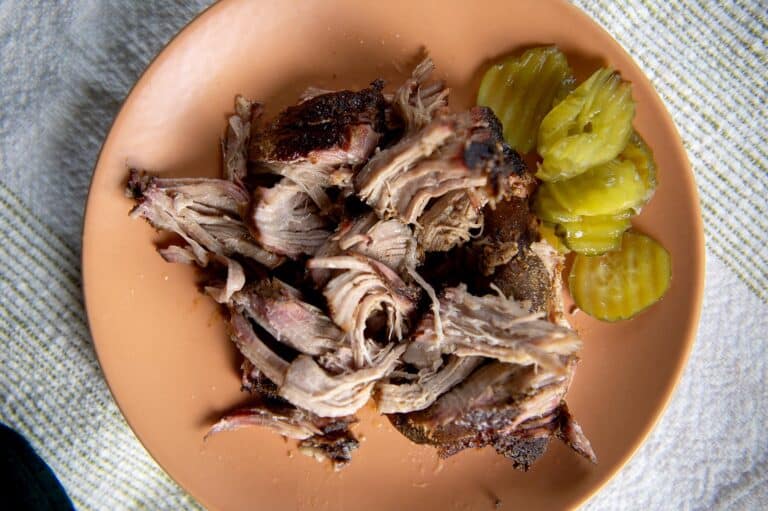
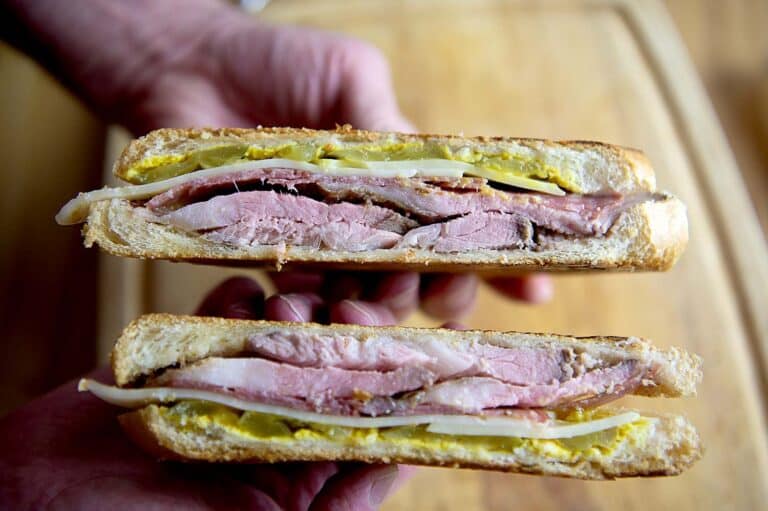

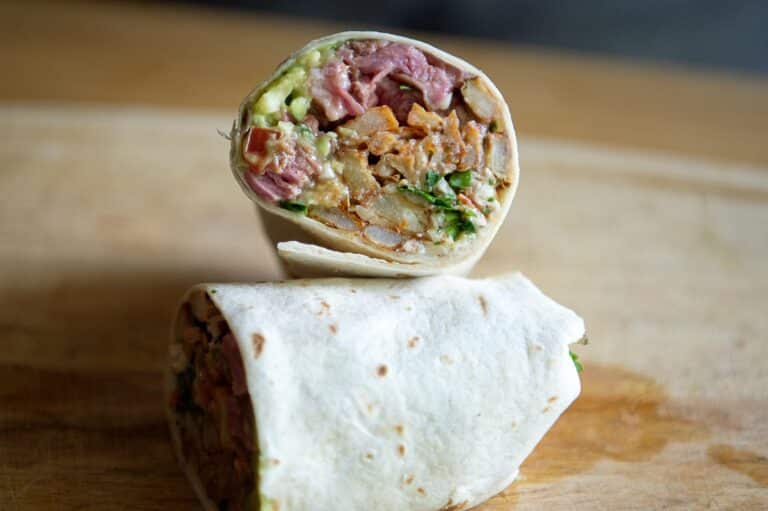
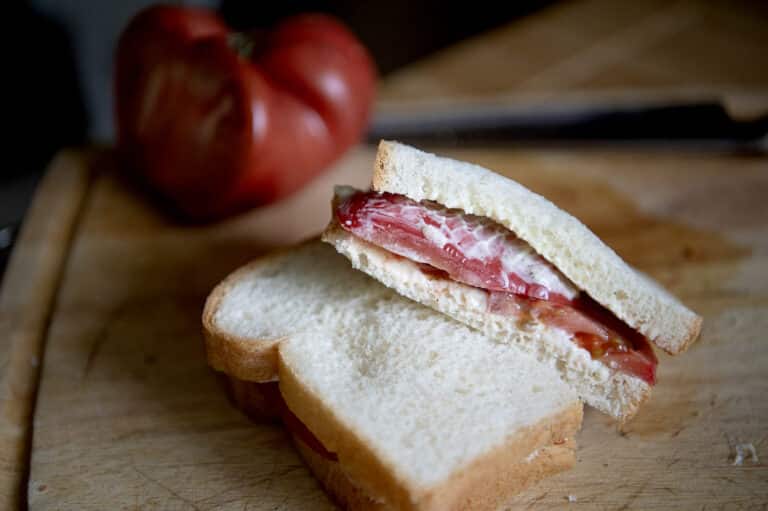
Disclosure: This post may contain affiliate links, meaning we receive a commission if you make a purchase using these links, at no extra cost to you.